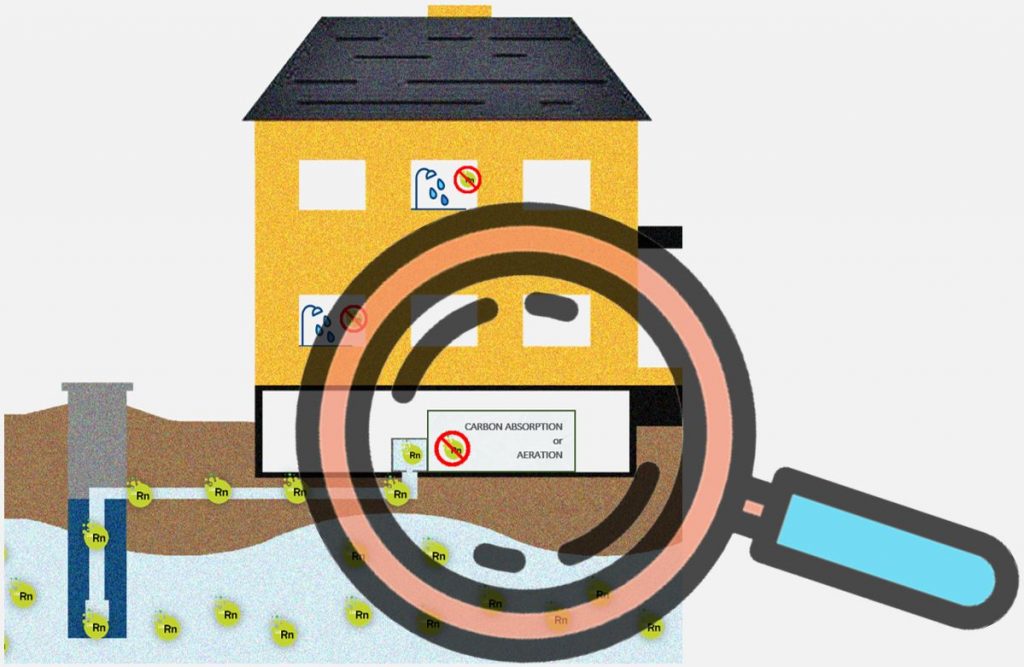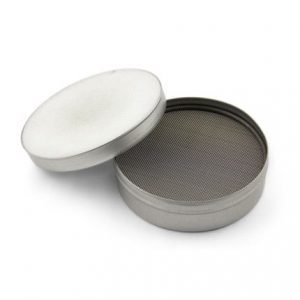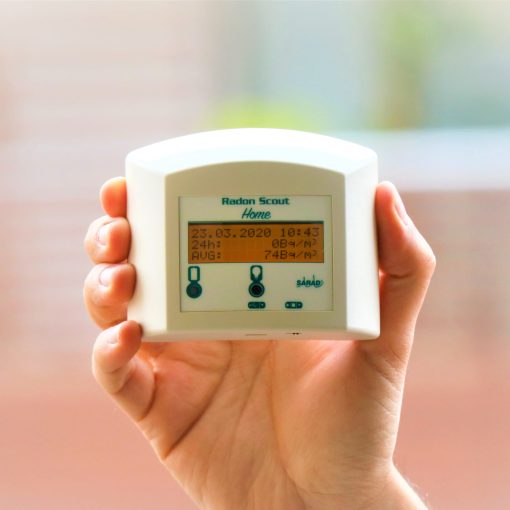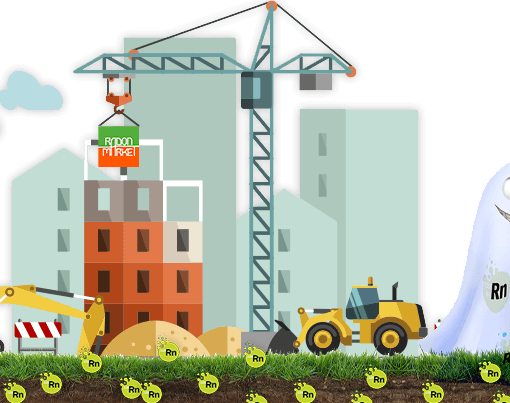
Reza Hosseini, PhD – Managing Director at RadonMarket, R&D Manager & NRPP MFM Certified Radon Professional at Niton srl
In the last number of RadonMarket Mag we have talked about Radon in water. We have seen “How does Radon initially dissolve in water?”, “How to evaluate the contribution of water in the increase of Radon in the air?” and “What to keep in mind when dealing with the Radon problem in water?”. In this article, we continue our discussion, and we will review the most common methods to reduce the concentration of Radon activity in water. If you missed the previous number of RadonMarket Mag (n° 14), please read it before starting this one.

Radon presente nell’acqua di pozzo che contribuisce al livello generale di Radon indoor
Practically there are three ways to reduce Radon in water:
I. Surface and Decay Storages
II. Carbon Absorption tanks
III. Aeration systems
I. Surface and Decay Storages
On the contrary of well water, surface water typically does not present a Radon in water concern. This is because there is enough residence time for Radon to off-gas and gradually dilute in an open environment as well as decay to Radon Decay Products (RDPs) product 🔔.
| 🔔 Ingestion of the RDPs not considered to be a significant health concern. Se non ricordi quali sono gli effetti sulla salute dovuti alla presenza di Radon, guarda questo Video corso gratuito su RadonMarket Academy.  |
Similarly, storing well water in a reservoir could reduce the Radon in water and consider as a mitigation technique. In many public water supplies, groundwater is pumped to the atmospheric storage before it pumps again to consumers’ houses. The private wells usually do not have a reservoir tank, and putting one is expensive and impractical. Hence, storage might not be a solution to mitigate Radon in water for individual wells.
As a general rule, homes at the far ends of the distribution network can have less Radon as more residence time allows Radon to decay to RDPs. On the other hand, when water usage goes up, the residence time goes down, and consequently, there is less time for Radon to decay.
II. Carbon Absorption tanks
Radon could adsorb onto activated charcoal due to physical adsorption or so-called physisorption. The fundamental interacting force of physisorption is Van der Waals 🔔. The Charcoal Canisters for short-term Radon measurements are operated based on physisorption 🔔🔔.
|
🔔 If you are interested to know more about physisorption, read this article on Wikipedia. 🔔🔔 The charcoal canisters are 4-inch open-face canisters. They consist of a metal canister filled with activated charcoal that is held in place by a wire mesh screen and spring clip. The Radon gas and some of the progeny attach to the charcoal surface. At the end of the testing, the canister is sealed and returned to the laboratory for processing and analysis.
|
Applying the same concept makes it possible to catch Radon in water by running the water through a larger tank fill with Granular Activated Charcoal (GAC). Remember that this is different from the small filters commonly put on the faucets to clean and improve water taste. For reducing Radon in water, the carbon tank should be big enough to support all the water usage of a house (except the water needed for gardening or use in open spaces). In addition, the tank should be installed at the entry point of the water supply.
When Radon is absorbed onto the charcoal, it breaks down into RDPs, and the produced RDPs are retained inside the tank. This maintains the concentration gradient between the Radon in water and the surface of the charcoals. Therefore, it creates a sort of self-cleaning system, and Radon can adsorb onto charcoal forever. However, there is a critical issue preventing the unlimited usage of the carbon tank! If you have read our previous articles, it may not be difficult to guess what this preventing reason is?
Clearly, the first reason could be clogging. Even though these systems have filters for removing the particles from the water, eventually, the dirt accumulates inside the tank, and the tank should be replaced. Still, the reason that may concern us more is the Gamma radiation!
As Radon decays inside the tank, it releases alpha, beta, and Gamma. The alpha and beta can not get out of the tank, but gamma certainty can. By accumulating the RDPs inside the tank, gamma emissions increase and become more significant 🗯. Of course, no one wants to keep a tank with radioactive material emitting Gamma radiation inside their house. Hence, carbon tanks are typically replaced yearly to prevent this issue.
|
🗯 The amount of Gamma that could be emitted from these tanks is 1 mR/hr per 370 Bq/L in water (10000 pCi/L in water). Hence, these systems are not generally recommended for Radon in water with a concentration greater than 370-740 Bq/L (10-20000 pCi/L in water) as a means to limit Gamma emission. 🤷 What happens when carbon tanks are taken out of service? |
Besides the complication that this method introduces, it is a valid technique for reducing the Radon in water. Moreover, there are also other advantages of using carbon, like reducing the odor and improving water taste.
III. Aeration systems
We have seen that the dissolved Radon easily gets out of the water and becomes a health risk when we use showers. So why not apply the same mechanism to reduce the Radon in water? This is exactly what happens in an aeration system.
In the aeration method, water from the well is sprayed into a tank, similar to a mini shower. At the same time, or by bellowing air with a pump or by making air bubbles inside the tank, Radon strips out from the water. Then the released Radon exhaust out of the house.
Aeration system also has their own limitations.
🔵 Like an Active Soil Depressurization (ASD), the discharge point for an aeration system should be located in a proper place to prevent exposing people to high Radon concentrations. In addition, because of the high humidity of the exhausted air from an aeration system, special attention is needed for the possible condensation problems.
🔵 On the contrary to carbon absorption, the aeration method puts water at atmospheric pressure. Therefore, an additional pressure tank and pump are needed to distribute water throughout the building.
🔵 The biggest concern in aeration systems is water quality. Blowing air through water could introduce bacteria and other organisms. For this reason, the source of the incoming air should be clean, and the air should pass through proper filters before contacting with water. In order to improve the water quality, especially when water is not in use continuously, an aeration system may also be equipped with a pre or post-disinfection with chlorine or post-disinfection with ultra-violet light systems.
| ☢ As a final comment, we can say that reducing Radon in water is a much expensive and complex project compared to a standard ASD system. Besides lowering the Radon, special attention needs to guarantee the quality of the drinking water. Therefore, when Radon in water is a concern, it is always recommended to ask for help from both Radon and water quality specialists. |





